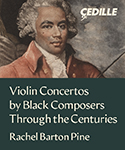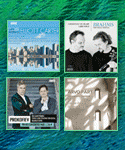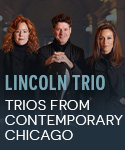This disc is simply stunning. Thomas Fey and his Heidelberg orchestra attack “The Bear” with unbridled ferocity and brilliance, offering dazzling evidence of why in their day Haydn’s symphonies came to be regarded as the ultimate examples of orchestral composition. There’s no soft-pedaling here! Listen to the symphony’s finale, to the uninhibited high spirits that characterize its folk-influenced themes, to the complete bravura Fey encourages his players to display (particularly the trumpets and drums). The work’s opening rhythmic tattoos cut through the texture with tremendous force but never become coarse or merely noisy, and the second subject, with the solo bassoon providing the only bass note, seldom has sounded so deliciously faux-naïve. An elegantly flowing Allegretto second movement and rhythmically charged minuet complete this well-nigh perfect picture.
Symphony No. 88, that joyous gem of a piece, makes a similarly powerful impression. Note how Fey, almost alone among conductors, makes sure that you really hear the principal theme of the slow movement’s melodic suspension across the bar line. (The first limb of the tune actually has only five notes–in syncopated rhythm–but most performances smooth out this detail by allowing the solo cello and oboe to yield center stage to the accompaniment’s downbeat in the second bar. This makes it sound as though the phrase has six notes rather than five.) For once you can hear this music with the rhythmic tension that Haydn built into it, and when the trumpet and drums make their belated entrance they hit you with the same shock that audiences in Haydn’s day must have experienced.
The Menuetto of this symphony, or more specifically its trio, offers another classic example of Fey being the first conductor to really “get it right”. How many people have fallen in love with this symphony, and with Haydn in particular, through this enchanting pastoral interlude, with its bagpipe bass line and chirping oboe melody? But who, aside from Fey, really has his bassoon hitting the drones fortissimo as Haydn specifies, and allows the horns similarly to play forte, all in a quiet context? It’s an episode with a Mahlerian wealth of simultaneous dynamic detail, and one in which you will almost never hear what Haydn actually wrote. Well here you finally do, and the result is spectacular. The finale breezes along with crystal clear textures (particularly the triple canon that comprises its second episode), and a coda that strikingly evokes a certain familial resemblance to the end of Beethoven’s Seventh Symphony.
Symphony No. 95, the stepchild of the London Symphonies, has been neglected largely because of the mature Haydn’s attitude toward music in minor keys. After working through his terrifying “Sturm und Drang” middle period Haydn came to treat minor keys not as something tragic, but more as a source of musical color and energy. Audiences used to Mozartian minor-key pathos or Beethoven’s tragic grandeur always have found Haydn’s fundamentally cheerful approach and more obviously intellectual rigor harder to take. And yet this symphony contains in its finale not only one of the most ravishing tunes that Haydn ever penned, but a contrapuntal tour-de-force comparable to what Mozart achieved in the finale of his Jupiter Symphony. As we might have predicted, Fey plays the pants off this finale, but he also injects more forward-driving energy and purpose into the first movement’s half-serious minor-key escapades than any other version. He also wrings every drop of grimness from the third movement Menuet, emotionally speaking the darkest music in the symphony (and how typical of Haydn to shift the expressive center of gravity to this unexpected place!).
Hänssler has captured all of this in sonics that offer both the clarity the music requires and enough space for the climaxes to expand impressively. In a series that has gone from strength to strength, this issue truly stands out as something exceptional. Now for the disclaimer: some readers may have noticed that this writer contributed booklet notes for early issues in this series. This is no longer the case or I wouldn’t be writing this review now. Frankly, it’s much more fun to be able to review the discs and recommend them to you, which is one reason I stopped writing the notes; but if this prior association leads you to question my objectivity then by all means take this into consideration if you are thinking about purchasing this disc. Better yet, try to listen and decide for yourself. There is no finer Haydn symphony disc currently available.
































